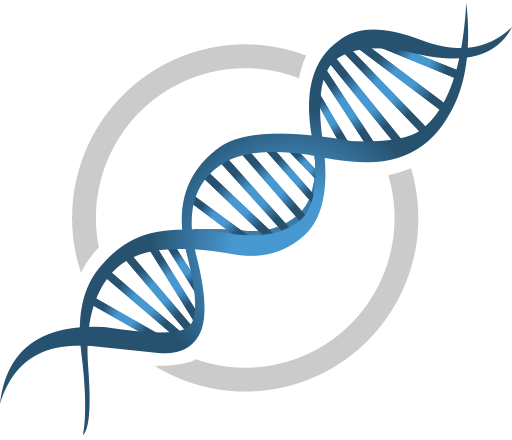Last Updated: September 15, 2022
Introduction to Galactosialidosis
Galactosialidosis (also known as Goldberg Syndrome) belongs to a family of disorders identified as lysosomal storage diseases. This disorder is characterized by the lysosomal accumulation of sialyloligosaccharides derived from glycoproteins and glycolipids as a consequence of combined defects in the lysosomal hydrolases, neuraminidase 1 (also referred to as lysosomal sialidase 1) and β-galactosidase, secondary to a defect in protective protein/cathepsin A (PPCA). Inheritance of galactosialidosis occurs as an autosomal recessive trait.
Molecular Biology of Galactosialidosis
The neuraminidase 1 gene (NEU1) gene located on chromosome 6p21.33 spanning only 3.5 kb and is composed of 6 exons encoding a 415 amino acid precursor protein that is subsequently glycosylated. Neuraminidase 1 has a dual function. It’s function relative to galactosialidosis is it’s involvement in lysosomal degradation of sialylated glycoconjugates in conjunction with PPCA.
Neuraminidase 1 is also involved in cellular immune responses. Neuraminidase 1 functions in the regulation of immune responses primarily through it’s action on specialized antigen-presenting cells called dendritic cells (DC). The action of neuraminidase 1 on DC leads to their activation and maturation thus enhancing immune responses to foreign antigen. Deficiencies in neuraminidase 1 result in sialidosis which accounts for the similarities in clinical presentation between sialidosis and galactosialidosis patients. All functional neuraminidase 1 activity is found associated with PPCA and β-galactosidase.
The β-galactosidase-1 enzyme is encoded by the GLB1 (galactosidase, beta 1) gene. The GLB1 gene is located on chromosome 3p22.3 and is composed of 19 exons that generate five alternatively spliced mRNAs. The major GLB1 encoded protein is a 677 amino acid precursor protein that is processed to 654 amino acid glycoprotein that functions in a complex with PPCA and saposin B. See the Fatty Acid, Triglyceride, and Phospholipid Synthesis page for a description of the activities of the saposins. The activity of PPCA is to stabilize β-galactosidase. Deficiency in β-galactosidase results in GM1 gangliosidosis. Only 1%–2% of total β-galactosidase is found in the PPCA/neuraminidase/β-galactosidase complex.
The PPCA protein is encoded by the CTSA (cathepsin A) gene. The CTSA gene is located on chromosome 20q13.12 spanning 7.5 kb and composed of 15 exons that generate three alternatively spliced mRNAs that encode two distinct protein isoforms. The primary enzyme begins as a precursor glycoprotein of 54kDa. In the lysosomes the 54kDa PPCA precursor protein is proteolytically processed into two subunits of 32kDa and 20kDa held together by disulfide bonds. In addition to its activity in the neuraminidase/β-galactosidase complex at acidic pH, PPCA functions at neutral pH in maintaining the activity of deamidases and esterases. These latter functions are extra-lysosomal and include the inactivation of neurokinin, substance P, bradykinin, endothelin I, and oxytocin. PPCA is released from thrombin-stimulated platelets and is found in granules of IL-2-activated natural killer (NK) cells.
Clinical Features of Galactosialidosis
All patients with galactosialidosis exhibit clinical manifestations that include coarse facial features, cherry-red spots in the eyes (typical of that seen in Tay-Sachs disease), foam cells in the bone marrow, and vacuolated lymphocytes. Given the range of phenotypic variation the disorder has been divided into three subgroups: early infantile, late infantile, and juvenile/adult.
Early infantile
This form of the disease is associated with hydrops, neonatal edema, hepatosplenomegaly, skeletal dysplasia including coarse facial features, growth impairment and early death. One symptom seen in the early infantile form and not in the other two are telangiectasias (small dilated vessels near the surface of the skin). Renal involvement is evidenced by proteinuria. Cardiac involvement includes cardiomegaly and septal thickening. Most patients succumb before 8 months of age due to cardiac and/or renal failure.
Late infantile
The observed symptoms in patients with the late infantile form are less severe than those seen in early infantile patients although symptoms do appear within the first months after birth. Characteristic findings in the late infantile form are coarse facial features, hepatosplenomegaly and dystosis multiplex. Dystosis multiplex refers to a constellation of skeletal abnormalities that are characterized by an enlarged skull, thickened calvarium, premature closure of lamboid and sagittal sutures, shallow orbits, enlarged J-shaped sella turcica (a saddle-shaped skull structure into which sits the bottom of the pituitary gland), and abnormal spacing of the teeth with dentigerous cysts. There is anterior hypoplasia of the lumbar vertebrae, the long bone diaphyses are enlarged and an irregular appearance of the metaphyses. The epiphyseal centers not well developed, the pelvis is poorly formed with small femoral heads and coxa vulga. The clavicles are short, thick and irregular and the ribs are oar shaped. Phalanges are shortened and trapezoidal in shape. Severe neurological involvement such as ataxia or myoclonus is not generally found in the late infantile group of patients.
Juvenile/Adult
The majority of galactosialidosis patients fall into the juvenile/adult class and are of Japanese origins. Characteristic clinical presentation of the juvenile/adult form includes myoclonus, neurological deterioration, ataxia and angiokeratoma. Visceromegaly, such as hepatosplenomegaly, is absent in this form of the disease. In addition, patients have long survival rates. The mean age of presentation of this form is 16 years. One consistent finding in the juvenile/adult form is coarse facial features, although not to the severity seen in the other forms or in other lysosomal storage diseases. In addition, almost all patient exhibit eye anomalies that include cherry-red spots typical of other lysosomal storage diseases such as Tay-Sachs disease. The most common neurological symptoms observed are myoclonus, cerebellar ataxia, intellectual impairment, and seizures.


